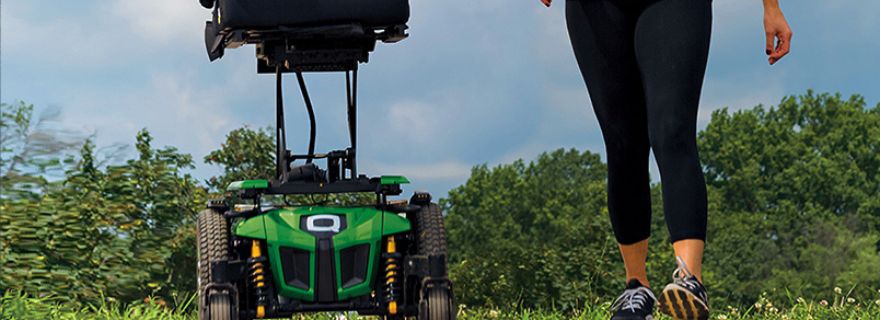
Struggling to choose between a Group 2 or Group 3 power wheelchair? You’re not alone. Many people with mobility issues find themselves in a similar predicament.
In this guide, we’ll explore the main differences between these power wheelchairs to help you make an informed decision.
Understanding Power Wheelchair Group Classifications
Power wheelchairs are categorized into various groups based on factors such as speed, ease of use, dynamic elevation, and battery capabilities. These groupings help those with disabilities find the most suitable wheelchair for their unique mobility requirements.
Group 2 Power Wheelchairs
Group 2 power wheelchairs are designed for regular use on flat surfaces with minimal surface bumps. They balance mobility and functionality, making them ideal for individuals who require enhanced maneuverability and slightly higher speeds. Some key features and benefits include:
- Smooth terrain performance - These chairs excel on flat surfaces and can navigate through doorways, hallways, and other everyday environments.
- Increased speed - With speeds up to 4mph, Group 2 power chairs offer a quick way to move around.
- Enhanced turning capabilities - These wheelchairs typically feature six wheels and improved turning options, allowing for better maneuverability in tight spaces.
To see if you qualify for a Group 3 wheelchair, you’ll need to consult a physical therapist, occupational therapist, or a physician experienced in rehab wheelchairs.
Group 3 Power Wheelchairs
In contrast, Group 3 power wheelchairs can handle a wider range of terrains, including flat and rough surfaces. With advanced features and capabilities, they’re more suitable for those who require versatility and outdoor navigation. Several notable features include but aren’t limited to:
- Longer battery life - These wheelchairs have larger batteries, extending their range and allowing for extended use without frequent recharging.
- Rough terrain performance - This power chair is designed for challenging indoor and outdoor environments.
- Multiple drive options - They offer a choice between mid, front, and rear-wheel drive, allowing users to select the configuration that best suits their preferences and needs.
To qualify for a Group 3 power wheelchair under Medi-Cal, patients need to undergo evaluation by a physical or occupational therapist or physician who can assess specific neurological, myopathic, or congenital skeletal abnormalities.
Group 3 chairs are commonly recommended for conditions such as muscular dystrophy, cerebral palsy, ALS, traumatic brain injury, spinal cord injury, and other severe diagnoses.
Key Differences Between Group 2 and Group 3 Power Wheelchairs
1. Terrain and Mobility
Group 2 power wheelchairs are best suited for regular use on flat surfaces with minimal bumps, making them ideal for indoor environments such as homes, offices, or assisted living facilities. They provide adequate short-distance mobility and offer improved maneuverability in tight spaces.
On the other hand, Group 3 power chairs can handle both flat and rough terrain. They do better outdoors and offer better stability and control on uneven surfaces.
Bottom Line: If you frequently encounter challenging surfaces or navigate through outdoor spaces, a Group 3 power wheelchair may be a better choice.
2. Speed and Performance
With a maximum speed of 4mph, Group 2 wheelchairs provide a faster alternative to manual wheelchairs. They’re suitable for individuals who require slightly higher speeds for efficient movement within their daily routines.
In contrast, Group 3 power wheelchairs offer higher speeds, often reaching 6mph or more. This increased speed is particularly advantageous for outdoor navigation, allowing users to cover longer distances more quickly.
Bottom Line: Assess your desired speed and maneuverability requirements. If you need higher speeds or improved turning capabilities, a Group 3 power wheelchair may better suit your needs.
3. Battery Life and Range
Group 2 wheelchairs generally have smaller batteries than Group 3 models. While they provide sufficient power for everyday use on flat surfaces, the battery life may be limited if used extensively or on challenging terrains.
Group 3 power wheelchairs come with larger batteries, offering extended range and longer operation without the need for frequent recharging. This makes them suitable for individuals who require extended outdoor use or have higher energy demands throughout the day.
Bottom Line: Evaluate your expected usage patterns and the importance of extended battery life. If you require a wheelchair with a longer range and the ability to operate for extended periods without frequent recharging, a Group 3 power wheelchair may be more suitable.
4. Advanced Features and Customization Options
Group 3 power wheelchairs incorporate advanced features and customization options not typically found in Group 2 models. These features may include power tilts, elevation capabilities, adjustable seats, and various safety tools.
Bottom Line: If you require additional functionality and customization to accommodate specific physical needs, a Group 3 complex power wheelchair may be the better choice. However, both Group 2 and Group 3 power wheelchairs are designed with users' comfort and safety in mind.
Choosing the Right Power Wheelchair for You
Choosing between a Group 2 and Group 3 power wheelchair is a big decision that can greatly impact your mobility and quality of life. Consider your specific needs, consult a healthcare professional, and check out reputable mobility equipment providers like Freedom Mobility to find the right one for you.
Have questions about power wheelchairs? Our knowledgeable team is ready to assist you in finding the perfect mobility solution. Contact us today for a FREE consultation!
July 5, 2023 by Freedom Mobility
Struggling to choose between a Group 2 or Group 3 power wheelchair? You’re not alone. Many people with mobility issues find themselves in a similar predicament. In this guide, we’ll explore the main differences between these power wheelchairs...